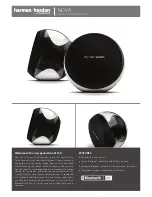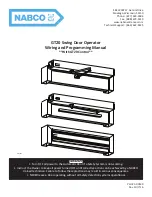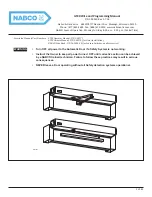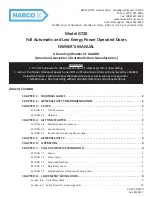
33
OPERATION
-
MODES OF CUTTING
Before starting any welding activity ensure that you have suitable eye protection and
protective clothing. Also take the necessary steps to protect any personnel within the
welding area.
Modes of cutting
Piercing
When not starting your cut from the material edge, most likely you will be piercing the material when
starting the cut which is the process in which a quick hole is made in the work piece.
Piercing is often just a starting hole that will be used to make a
‘
circular
’
cut within the material.
You can use standard cutting tips for piercing although you must ensure the plasma machines output
amperage matches the cutting tip amperage rating. The thickness of the material to be pierced will need
to fall in the correct amperage range for the machine and cutting tip installed. If the material is slightly
thicker than the machines piercing capacity, you can pre
-
drill a hole and treat your cut like an edge start
cut.
There are two different techniques for piercing depending on the thickness of the work piece.
If the work piece is less than 2mm sheet metal, the torch can be held at a 90° (perpendicular) angle to
the material being cut with the cutting tip or torch stand off touching or about 2mm away from the work
piece (this can depend on which consumable configuration you have installed). Begin by establishing the
pilot arc and as soon as the pilot arc/main cutting arc penetrates the work piece maintain your normal
cutting height and the cutting process can then begin.
If the material being cut is thicker than 2mm the torch should be held at a 30 ~ 60° angle approximately
2 to 3mm above the work piece ensuring to direct the
‘
blown back
’
particles away from the torch tip,
operator and any bystanders. Begin by establishing the pilot arc and when the pilot arc transfers, use a
smooth, slow rolling motion to move the torch to a 90° (perpendicular) angle.
At this point, the pierce should have been created (if not hold the torch still until the cutting arc sparks
exits the bottom of the work piece). Now the pierce has been made, the
cutting process can begin.
Bevelling
Bevelling allows you to angle the edge of a flat plate or pipe to allow for
deeper weld penetration. This process is normally used for materials that
are 9mm or thicker.
You can utilize standard cutting tips for bevelling, but again, you need to
ensure you utilize the correct plasma machine current matches the cutting
tips used.
Ensure that the thickness of the material to be bevelled falls in the amperage
range of the plasma machine and cutting tip that you will be using.
If bevelling by hand, a roller and/or angle guide can be helpful in maintaining
the consistent bevel face and the desired
angle which is usually determined by the
weld joint design.
The industry standard angle ranges are generally from 15 ~ 45°. The
cutting tip would normally be between 3 ~ 6mm from the work piece.
Bevel type roller guide kits (as shown left and above) can also be very
helpful in creating the required bevel cuts.
Summary of Contents for EVO 2.0 EP-45
Page 1: ...1 ClearVision Optional TFT LCD screen included...
Page 44: ...44 UKCA Declaration of Conformity...
Page 45: ...45 EC DECLARATION OF CONFORMITY...
Page 50: ...50...
















































